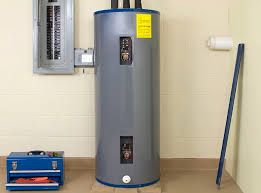Best Practices for Maintaining Your Home's Hot Water System
Best Practices for Maintaining Your Home's Hot Water System
Blog Article
Each person maintains their own unique way of thinking when it comes to How to Maintain a Hot Water Heater in a Few Simple Steps.

Warm water is essential for day-to-day convenience, whether it's for a refreshing shower or cleaning meals. To guarantee your hot water system runs efficiently and lasts much longer, regular maintenance is crucial. This write-up provides practical tips and understandings on how to maintain your home's warm water system to prevent disturbances and pricey repairs.
Intro
Keeping your home's hot water system could appear overwhelming, however with a couple of straightforward steps, you can ensure it operates smoothly for many years to find. This guide covers every little thing from comprehending your warm water system to DIY upkeep ideas and understanding when to hire professional help.
Significance of Keeping Your Warm Water System
Regular upkeep not just expands the lifespan of your warm water system yet additionally ensures it operates successfully. Ignoring upkeep can bring about decreased effectiveness, higher energy costs, and even premature failure of the system.
Indicators Your Warm Water System Requirements Maintenance
Knowing when your hot water system needs attention can prevent major issues. Watch out for indications such as irregular water temperature level, strange noises from the heating system, or rustic water.
Understanding Your Warm Water System
Prior to diving right into upkeep jobs, it's valuable to understand the standard components of your hot water system. Generally, this includes the water heater itself, pipelines, anode rods, and temperature level controls.
Regular Monthly Upkeep Tasks
Normal monthly checks can assist capture small issues before they intensify.
Flushing the Hot Water Heater
Purging your hot water heater eliminates sediment buildup, improving performance and extending its life.
Checking and Changing Anode Rods
Anode rods stop rust inside the container. Evaluating and replacing them when broken is important.
Inspecting and Adjusting Temperature Level Settings
Readjusting the temperature settings makes certain optimal performance and security.
Do It Yourself Tips for Upkeep
You can carry out numerous upkeep tasks yourself to maintain your hot water system in top problem.
Looking for Leaks
Routinely evaluate pipelines and links for leakages, as these can bring about water damages and greater bills.
Testing Stress Alleviation Valves
Evaluating the pressure relief valve guarantees it functions properly and stops extreme stress accumulation.
Shielding Pipes
Protecting hot water pipelines decreases warm loss and can conserve energy.
When to Call a Specialist
While do it yourself upkeep is advantageous, some issues call for specialist know-how.
Complex Issues Calling For Professional Assistance
Instances consist of major leakages, electrical troubles, or if your water heater is continually underperforming.
Routine Specialist Upkeep Benefits
Specialist maintenance can include thorough inspections, tune-ups, and ensuring compliance with security criteria.
Verdict
Routine upkeep of your home's warm water system is important for effectiveness, durability, and cost savings. By adhering to these suggestions and understanding when to look for professional assistance, you can make certain a trusted supply of warm water without unforeseen disruptions.
How to Maintain an Instant Hot Water Heater
Before tinkering with your hot water heater, make sure that it’s not powered on. You also have to turn off the main circuit breaker and shut off the main gas line to prevent accidents. Also turn off the water valves connected to your unit to prevent water from flowing into and out of the appliance. 2. When you’re done, you have to detach the purge valves’ caps. These look like the letter “T†and are situated on either side of the water valves. Doing so will release any pressure that has accumulated inside the valves while at the same time avoid hot water from shooting out and burning your skin. 3. When the purge valves’ caps are removed, you have to connect your hosing lines to the valves. Your unit should have come with three hoses but if it didn’t, you can purchase these things from any hardware or home repair shops. You can also get them from retail stores that sell water heating systems. Read the user’s manual and follow it to complete this task properly. When the hosing lines are connected, open the purge port’s valves. 4. You should never use harsh chemical cleaners or solutions when cleaning your unit. Make use of white vinegar instead. It should be undiluted and you’ll probably use about 2 gallons. 5. Now flush your water heater. This task should probably take about 40 minutes. We can’t give you specific directions for this because the procedure is carried out depending on the type, model and brand of your heater. With that being said, refer to the user’s manual. 6. When you’re done draining the unit, you have to turn off the purge port valves again. Remove the hosing lines that you earlier installed on each of the water valves. Put the valve caps (purge port) back in their respective places and be very careful so as not to damage the rubber discs that are found inside these caps. 7. Now that everything’s back in place, check your user’s manual again to find out how to reactivate your water heating system. 8. Once it is working, turn one of your hot water faucets on just to let air pass through the heater’s water supply pipes. Leave the tap on until water flows smoothly out of it. https://www.orrplumbing.com/blog/2014/september/how-to-maintain-an-instant-hot-water-heater/

As an enthusiastic reader about Tips on Maintaining a Water Heater, I think sharing that section was a smart idea. Enjoyed reading our review? Please quickly share it. Help others discover it. Bless you for your time. Revisit us soon.
Book-Now Report this page